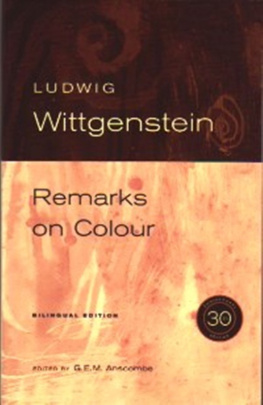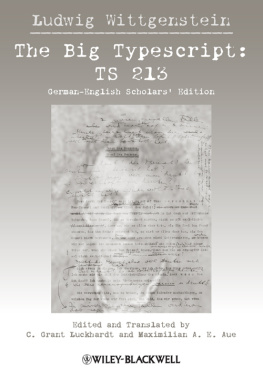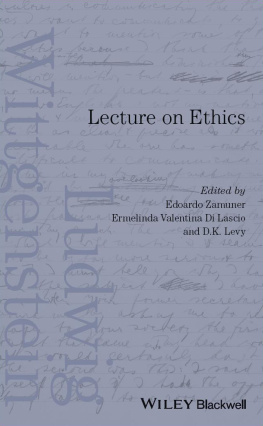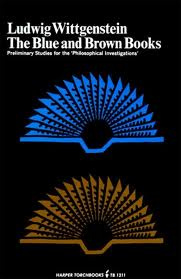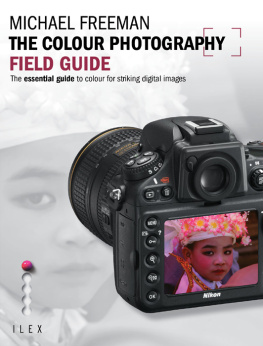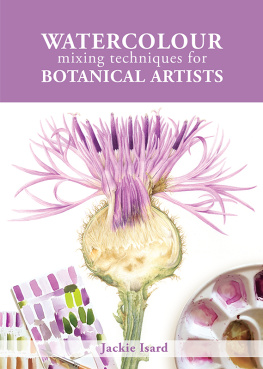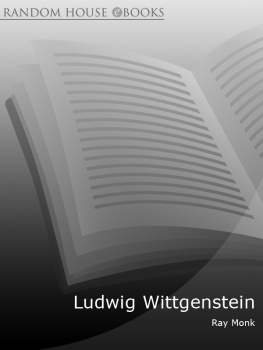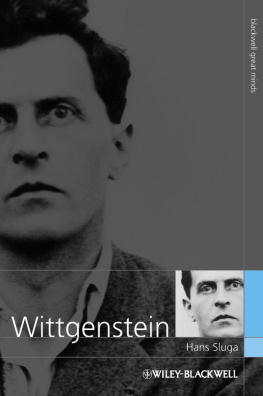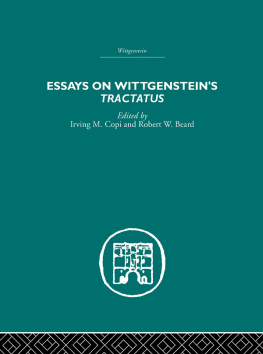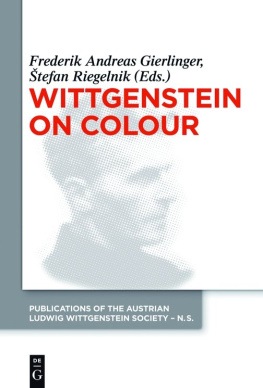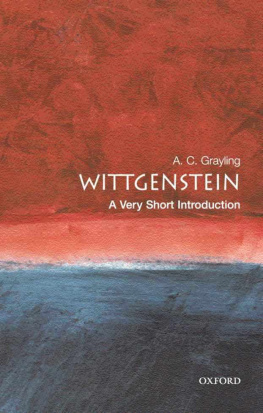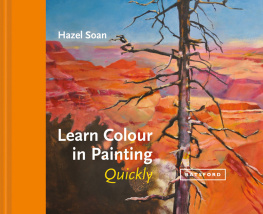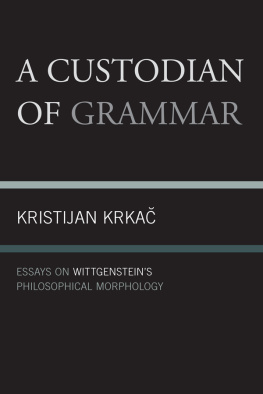Page Break ii
Titlepage
Page ii
Ludwig Wittgenstein:
REMARKS ON COLOUR
Edited by
G.E.M. ANSCOMBE
Translated by
Linda L. McAlister and
Margarete Schttle
BASIL BLACKWELL
Page Break 1
EDITOR'S PREFACE
Page 1
Part III of this volume reproduces most of a MS book written in oxford in the Spring of 1950. I have left out material on "inner-outer", remarks about Shakespeare and some general observations about life; all this both was marked as discontinuous with the text and also will appear elsewhere. Part I was written in Cambridge in March 1951: it is a selection and revision of the earlier material, with few additions. It is not clear whether Part II ante- or post-dates Part III. It was part of what was written on undated loose sheets of foolscap, the rest being devoted to certainty.
Wittgenstein left these in his room in my house in Oxford when he went to Dr. Bevan's house in Cambridge in February 1951, in the expectation of dying there. His literary executors decided that the whole of this material might well be published, as it gives a clear sample of first-draft writing and subsequent selection. Much of what was not selected is of great interest, and this method of publication involves the least possible editorial intervention.
Page 1
In the work of determining the text I was much helped by G. H. von Wright's careful typescript of it, and also by an independent typescript made by Linda McAlister and Margarete Schttle We have to thank them also for their translation. This, with agreed revisions by the editor, is published here.
Page 1
I should also like to thank Dr. L. Labowsky for reading through the German text.
G. E. M. Anscombe
Page Break 2
I
Page 2
1. A language-game: Report whether a certain body is lighter or darker than another.--But now there's a related one: State the relationship between the lightness of certain shades of colour. (Compare with this: Determining the relationship between the lengths of two sticks--and the relationship between two numbers.)--The form of the propositions in both language-games is the same: "X is lighter than Y". But in the first it is an external relation and the proposition is temporal, in the second it is an internal relation and the proposition is timeless.
Page 2
2. In a picture in which a piece of white paper gets its lightness from the blue sky, the sky is lighter than the white paper. And yet in another sense blue is the darker and white the lighter colour. (Goethe). On the palette white is the lightest colour.
Page 2
3. Lichtenberg says that very few people have ever seen pure white. So do most people use the word wrong, then?
And how did he learn the correct use?--He constructed an ideal use from the ordinary one. And that is not to say a better one, but one that has been refined along certain lines and in the process something has been carried to extremes.
Page 2
4. And of course such a construct may in turn teach us something about the way we in fact use the word.
Page 2
5. If I say a piece of paper is pure white, and if snow were placed next to it and it then appeared grey, in its normal surroundings I would still be right in calling it white and not light grey. It could be that I use a more refined concept of white in, say, a laboratory (where, for example, I also use a more refined concept of precise determination of time).
Page 2
6. What is there in favor of saying that green is a primary colour, not a blend of blue and yellow? Would it be right to say: "You can only know it directly by looking at the colours"? But how do I know that I mean the same by the words "primary colours" as some other
Page Break 3
person who is also inclined to call green a primary colour? No,--here language-games decide.
Page 3
7. Someone is given a certain yellow-green (or blue-green) and told to mix a less yellowish (or bluish) one--or to pick it out from a number of colour samples. A less yellowish green, however, is not a bluish one (and vice versa), and there is also such a task as choosing, or mixing a green that is neither yellowish nor bluish. I say "or mixing"
because a green does not become both bluish" and yellowish because it is produced by a kind of mixture of yellow and blue.
Page 3
8. People might have the concept of intermediary colours or mixed colours even if they never produced colours by mixing (in whatever sense). Their language-games might only have to do with looking for or selecting already existing intermediary or blended colours.
Page 3
9. Even if green is not an intermediary colour between yellow and blue, couldn't there be people for whom there is bluish-yellow, reddish-green? I.e. people whose colour concepts deviate from ours--because, after all; the colour concepts of colour-blind people too deviate from those of normal people, and not every deviation from the norm must be a blindness, a defect.
Page 3
10. Someone who has learnt to find or to mix a shade of colour that is more yellowish, more whitish or more reddish, etc., than a given shade of colour, i.e. who knows the concept of intermediary colours, is (now) asked to show us a reddish-green. He may simply not understand this order and perhaps react as though he had first been asked to point out regular four-, five-, and six-angled plane figures, and then were asked to point out a regular one-angled plane figure. But what if he unhesitatingly pointed to a colour sample (say, to one that we would call a blackish brown)?
Page 3
11. Someone who is familiar with reddish-green should be in a position to produce a colour series which starts with red and ends with green and which perhaps even for us constitutes a continuous Page Break 4
transition between the two. We would then discover that at the point where we always see the same shade, e.g. of brown, this person sometimes sees brown and sometimes reddish-green. It may be, for example, that he can differentiate between the colours of two chemical compounds that seem to us to be the same colour and he calls one brown and the other reddish-green.
Page 4
12. Imagine that all mankind, with rare exceptions, were red-green colour-blind. Or another case: everyone was either red-green or blue-yellow colour-blind.
Page 4
13. Imagine a tribe of colour-blind people, and there could easily be one. They would not have the same colour concepts as we do. For even assuming they speak, e.g. English, and thus have all the English colour words, they would still use them differently than we do and would learn their use differently.
Or if they have a foreign language, it would be difficult for us to translate their colour words into ours.
Page 4
14. But even if there were also people for whom it was natural to use the expressions "reddish-green" or
"yellowish-blue" in a consistent manner and who perhaps also exhibit abilities which we lack, we would still not be forced to recognize that they see colours which we do not see. There is, after all, no commonly accepted criterion for what is a colour, unless it is one of our colours.
Page 4
15. In every serious philosophical question uncertainty extends to the very roots of the problem.
We must always be prepared to learn something totally new.
Page 4
16. The description of the phenomena of colour-blindness is part of psychology: and therefore the description of the phenomena of normal vision, too? Psychology only describes the deviations of colour-blindness from normal vision.
Page 4
17. Runge says (in the letter that Goethe reproduced in his Theory of Colours), there are transparent and opaque colours. White is an opaque colour.
This shows the indeterminateness in the concept of colour or again in that of sameness of colour.
Next page
